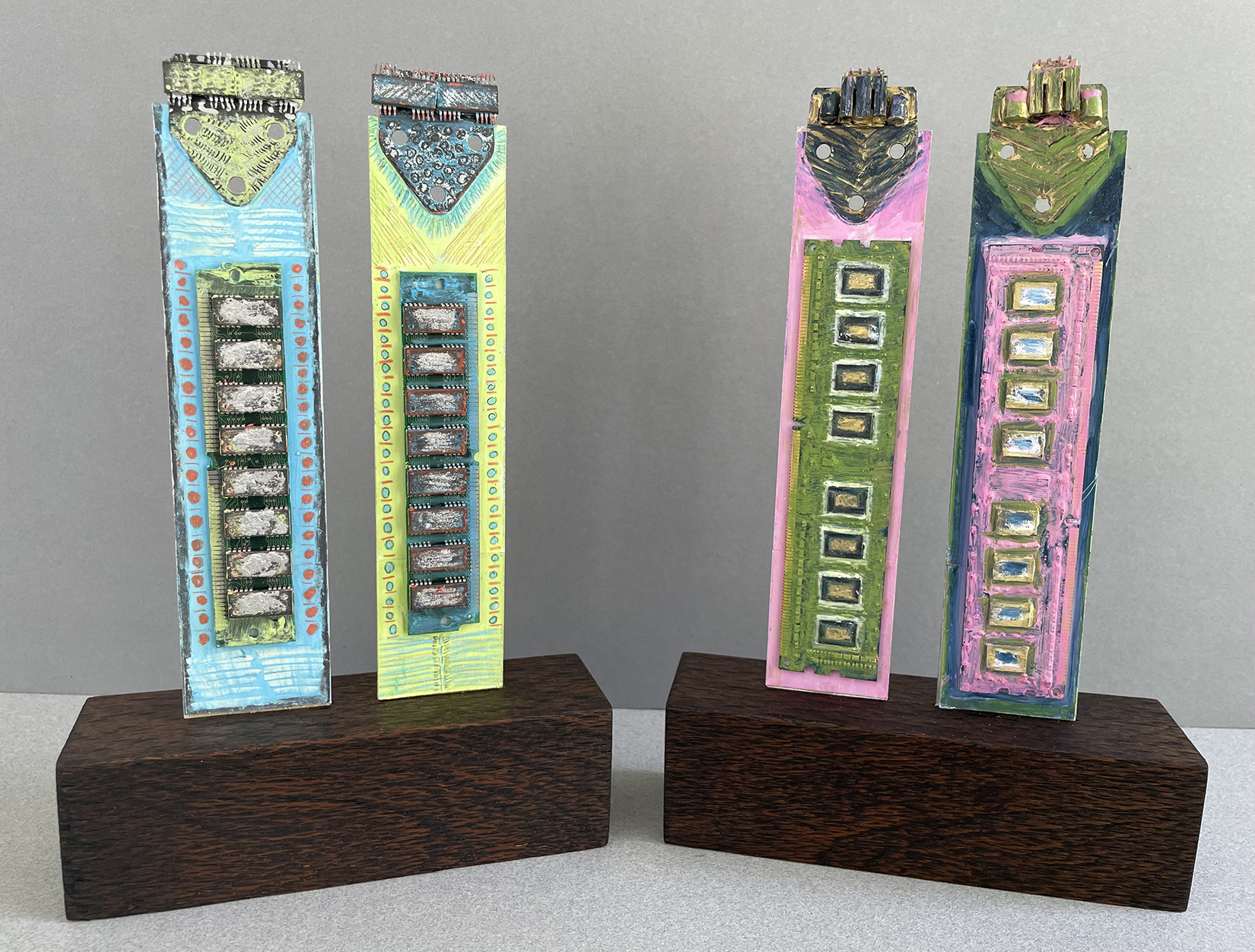TAWA at 45
The Exhibition

Mary Yess
Oxford Codex: Lares Industria XV-XVIII
sculpture, (mixed media: pencil, oil, found objects, 2023); 7″h x 7″w x .25″d
Mary Yess (www.saatchiart.com/maryyess) received her MFA in painting from Pratt Institute, Brooklyn (NY), where she studied with George McNeil. In between undergraduate and graduate school, Yess took classes at MCCC, notably with Mel Leipzig. Over the course of her career, Yess has participated in many exhibits. Her most recent invitational show was “Women Artists, Trenton Style,” at the Trenton City Museum. She is a former member of Muse Gallery in Philadelphia, and her work is included in numerous private and public collections. Yess was a founder and the first elected president of the Trenton Artists Workshop Association (TAWA) and served on the boards of the Trenton City Museum, the Trenton Arts Commission, and the Mercer County Cultural & Heritage Commission. She was the creator of the Ellarslie Open and managed the show for its first ten years. Yess has curated shows in NJ and PA, served as a juror for many shows, and was a member of several NJ State Council on the Arts grant review panels and public arts inclusion panels. She has taught painting and drawing at Princeton Art Association, Artworks, TAWA, and has lectured on art and art history. Yess received a painting fellowship from the NJ State Council on the Arts. In 1988, Yess, then Executive Director of the Princeton Art Association (PAA), led the project to find a new home for PAA and approached the City of Trenton (NJ) with a proposal to run the building that eventually became its only home. Along with the move, she helped PAA change its name to Artworks to be more representative of the arts in central NJ. During her ten years as Executive Director of Artworks, Yess curated or co-curated numerous exhibits.
“Old industrial buildings—from all over the US, but mostly along the Route 1 corridor near Trenton—have been my subject matter since the 1970s: clearly built by hand, abandoned, fallen into ruins, they are monuments to a period of greatness—industrial palaces—each a true American Versailles. I would like for people to see the picture or object itself, but also to come in close to the work, to taste the details: the roughness of paintbrush strokes, the marks of pencil and pen, and the texture of found objects. My paintings use different media: oil, oil pastel, pen, pencil, and objects such as old circuit boards. These objects reinforce the industrial aspect of the pieces and give them a dimensionality they might otherwise not have. The piece in this show is one result of morphing from using circuit boards as the basis for industrial landscapes to creating industrial totems or lares. Lares were Roman household gods, represented by small sculptures or objects and were important in their everyday life. I have also returned to making welded sculptures, a satisfying art-making process incorporating both industrial methods and materials.”
